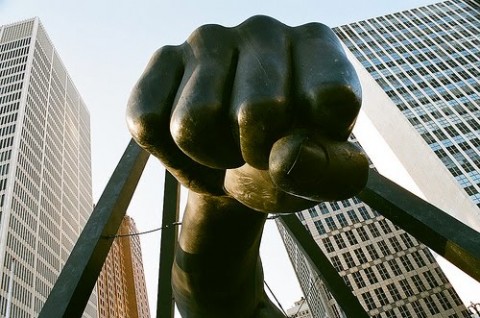Where You Sit, What You See
January 26, 2012 Leave a comment
It has been a heartening return to my home state these past couple of days while delivering a two-day Facilitative Leadership workshop with members of Michigan’s philanthropic community. Yesterday, we spent some time in the afternoon talking about power and how it plays out in different kinds of change initiatives. The point was made a number of times that those who are most impacted by the issues we are trying to solve must be in on the solutions, including the design and carrying out of the processes of problem-analysis, opportunity identification, and vision creation. To drive this point home, I relayed a story Melinda and I heard from a community organizer with whom we are working who conducted some vision sessions in her community around what it would look like if there were equitable educational opportunities for all children in the state. The audience with whom she conducted this session included various kinds of professionals in the field and parents. What she reported back was that overwhelmingly parents’ visions actually included the children, while the professionals tended to focus mostly on infrastructure. Where we sit impacts what we see.
Having spent some time these last couple of days talking about the current state of affairs in places like Detroit, Grand Rapids, and my hometown of Flint, and the need to lift up examples of community action/innovation and build on these, I thought it was poetic synergy to come across the piece below by Peter Putnam, that was written in response to the Grace Lee Boggs “On Being” interview Cynthia blogged about a couple of days ago.
Detroit Jesus
Time, Inc., buys a house in Detroit
and tries to track him for a year.
But he’s invisible to those looking for a
blue-eyed dude in a white robe
or for a city gone completely to hell.
He is the cinnamon of my son’s skin
with a green thumb and a Tigers cap
and my daughter’s dove-grey eyes.
He prays into Blair’s guitar,
hangs out on Field St.,
bakes bread at Avalon
and plants tomatoes on the East side.
He rides his old-school bike down the heart
of Grand River,
paints a mural in the Corridor,
shoots hoop in the Valley
with priests and pimps and lean young men
trying to jump their way to heaven.
At night,
while the Border Patrol counts cars,
he walks across the water
to Windsor,
grabs a bite to eat,
walks back.
Like Grace,
born in Providence,
he lives so simply,
he could live anywhere:
Dublin, Palestine, Malibu.
But Detroit is his home.
It was here one Sunday
a boy invited him down
off the cross
and into his house
for a glass of Faygo red pop.
That was centuries ago, it seems,
and how far he’s come,
reinventing himself more times than Malcolm.
He’s been to prison,
been to college,
has a tattoo of Mary Magdalene on one arm,
Judas on the other,
and knows every Stevie Wonder song by heart.
He’s Jimmy, he’s Invincible, he’s Eminem.
He’s the girls at Catherine Ferguson
and their babies,
and he’s the deepest part of Kwame
still innocent as a baby.
The incinerator is hell,
but he walks right in,
burns it up with love,
comes out the other side,
walks on.
He can say Amen in twelve religions,
believes school is any place
where head and heart and hands
meet,
and wears a gold timepiece around his neck
with no numbers, just a question:
What time is it on the clock of the world?
And every second of every day
he answers that question
with a smile wide as the Ambassador
and a heart as big as Belle Isle,
hugging this city in his arms
and whispering to each soul
words no one else dares to say:
You are Jesus,
this is your Beloved Community,
and the time
on the clock of the world
is Now.